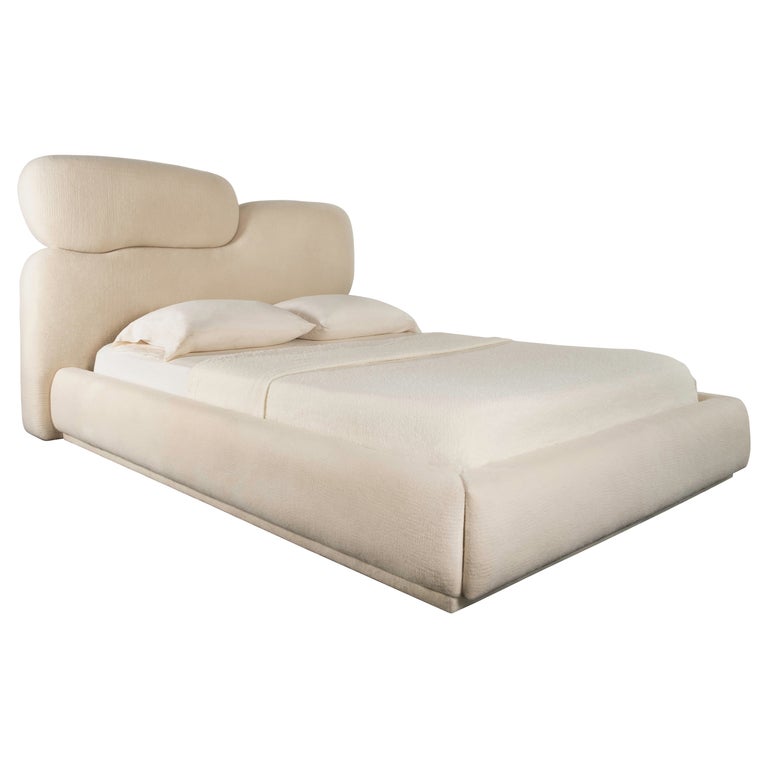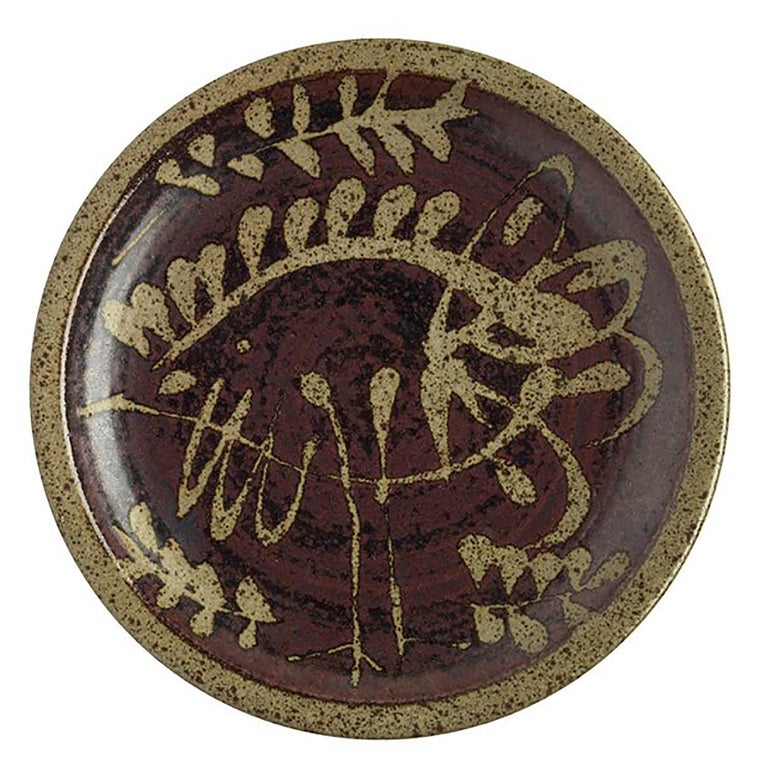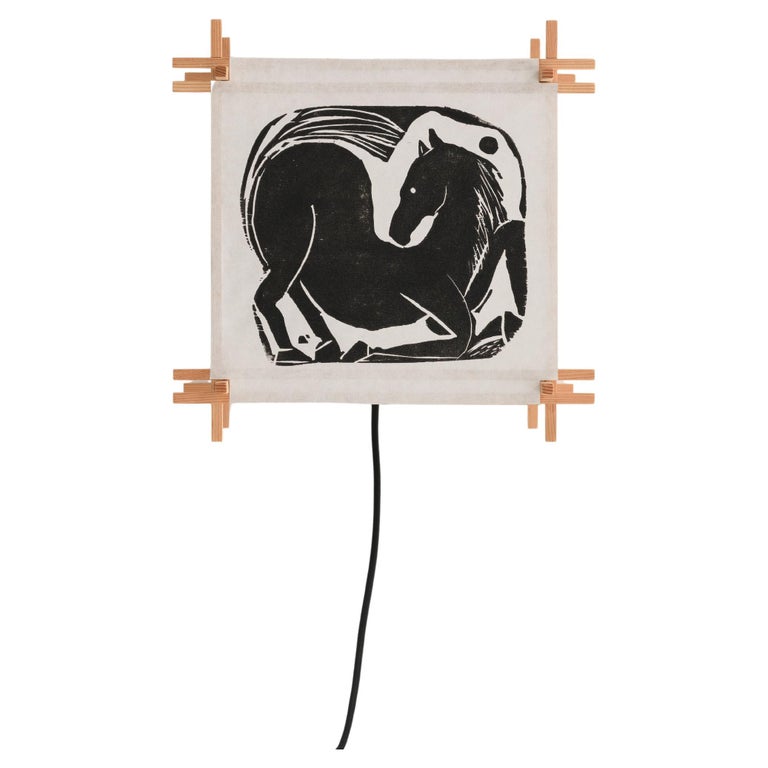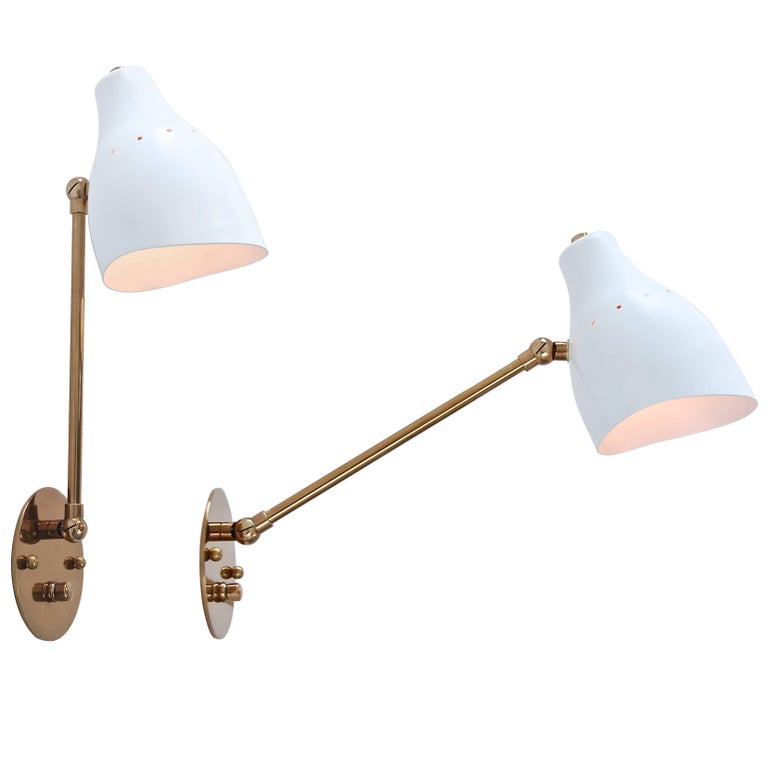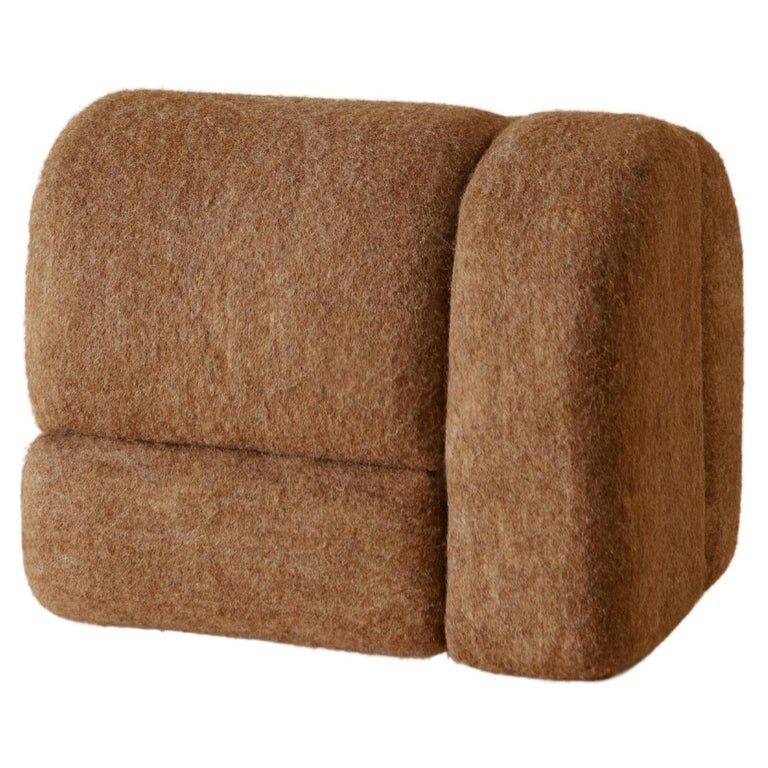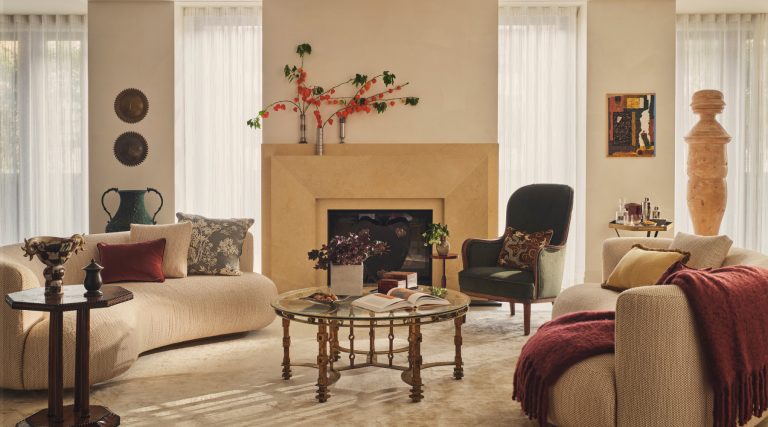April 6, 2025For Elena Dendiberia and Homan Rajai — founders of the San Francisco–based 1stDibs 50 firm Studio AHEAD — crafting the interiors of this Silicon Valley residence was as much about balancing the husband-and-wife clients’ disparate energies as about selecting finishes, fixtures and furnishings, art and accessories that would turn the newly purchased mid-20th-century house into a 21st-century home for them and their young son.
The modernism-obsessed, yacht-loving husband, who comes from an East Coast family, is the sort of person who developed a fascination with Georg Jensen and other mid-century silver while still quite young. In contrast, Rajai says, the Venezuelan-born, Southern California–bred wife — who practices meditation and yoga — has “a more natural, intuitive sensibility.”

The designers sought to capture the essence of both these perspectives while helping the couple establish the look and feel they wanted for their home. Tapping into the wife’s passions and personality, Dendiberia and Rajai spun out a scheme that deployed fluid curves, as in the dining room’s wave-like ceramic rondo by Puerto Rican artist Jeannine Marchand and the breakfast’s room’s Vava Objects table, made from the sort of fiberglass used for the hulls of the husband’s beloved boats.
They also brought in nature-inspired art and objects by such Northern California notables as Heath Ceramics and J.B. Blunk. And they made copious use of soft textiles, like the wool of the kitchen’s Sheep stools, custom versions of a piece from Studio AHEAD’s own furniture collection.

For the structural elements of the interior architecture and for many of the larger custom furniture pieces, they stuck to harder materials and rectilinear forms, channeling the husband’s aesthetic preferences. “We went to his realm of reality,” Rajai explains, “and kept it very mid-century.”
Dendiberia and Rajai saw the couple’s two preferred modes — the organic and the modern — as indivisible, informing the house and connecting it to its setting.
The low-slung single-story structure, with walls of windows and a perfectly flat roof, sits amid a grove of gnarled oak trees on a wooded slope overlooking San Francisco Bay in the distance. It reads as a mod installation in an ancient forest.

Despite that duality, Rajai notes, “the house was kind of only on one plane of reality.” It didn’t quite engage with its natural surroundings the way it might have, and it certainly didn’t connect the two sides of its new owners’ personalities the way the designers wanted it to.
So, in collaboration with the Los Angeles architecture firm Marmol Radziner, Rajai and Dendiberia set about expanding the house’s reality, and their clients’, too. The designers subtly switched around the layout to better capture views of the trees and bay, fully renovated the kitchen and baths, installed large sliding doors to divide certain spaces from each other, added square footage for a home office and created an extended basalt fireplace surround for the living room that now seems to reach into the great outdoors.

When it came to the decorating, Studio Ahead began with the palette, which Dendiberia describes as “very warm, very Northern California and focused on natural materials.” She points to the oak used for the millwork, connecting it to the trees outside, plus lots of wools and felts. “It’s a very enveloping environment.”
Among the best places to experience this is the highly livable living room, which the designers clad almost entirely in finely textured greige wool, using it both as a wallcovering and for the curtains that can be pulled over the floor-to-ceiling windows, which look out to the oaks. “It feels like you’re cocooned and floating in the canopy structure,” Rajai says.


Within that soft cocoon, Dendiberia and Rajai — who established Studio Ahead in 2019, three years after meeting in the offices of San Francisco decorator Candace Barnes — placed equally tactile pieces. A classic mid-century Louis Poulsen pendant light, newly powder coated in a fern green, hangs over a table from the owners’ collection, at which sit iconic leather Cab chairs, designed by Mario Bellini for Cassina in 1970. Opposite the clean-lined basalt fireplace, a restrained Christian Liaigre leather-covered square coffee table enjoys a generous hug from a voluptuously curving custom sectional. Each of these jibes with either the husband’s modernist or the wife’s organic sensibilities.

Known for their championship of Northern California artists and artisans past and present, the designers adorned the interiors with works that enhanced the dialogue between old and new.
The living room highlights a contemporary eye-shaped felt sculpture by Japanese-born, East Bay–based maker Masako Miki; a 2016 Leslie Williamson photograph of a pitcher mold at Heath Ceramics; a smooth stone mantel-top sculpture by 20th-century carver J.B. Blunk; and a clay platter by Peter Voulkos, who founded the ceramics program at the University of California, Berkeley, in 1959. These pieces’ gentle forms and natural materials help balance both the house’s architecture and the clients’ yin and yang.

One particularly impressive acquisition, a 1968 acrylic on canvas by Gordon Onslow Ford, commands almost the entire wall behind the primary suite’s bed. After studying with Fernand Léger, the British-born Ford joined the Surrealist movement in 1930s France, collaborating with Roberto Matta and later, in San Francisco, with Sibyl Moholy-Nagy. In this painting, amoeba-like shapes float amid a surreal sea of dashes, dots and lines superposed on a vertigo-inducing series of concentric black-and-white pointed ellipses.

“Ford’s main focus was trying to capture the unconscious mind,” says Rajai, noting the connection to the wife’s passion for mindfulness practices. “This is encapsulating that energy.”
Floating in the middle of the room, the bed — upholstered in a mossy Jim Thompson velvet — nods to the husband’s love of streamlined and highly efficient boat interiors. Dendiberia and Rajai used the rear of the bed’s tall headboard to carve out and then conceal a desk space for the wife.

“There’s something about the idea of a boat and a voyage and traveling and also about consciousness,” Rajai says of the room’s atmosphere. “It’s like you’re traveling through the universe.”
If that all sounds more than a little woo-woo, that’s sort of the point. The way Dendiberia and Rajai see things, it’s just woo-woo enough to make the whole house hum in cosmic harmony.

